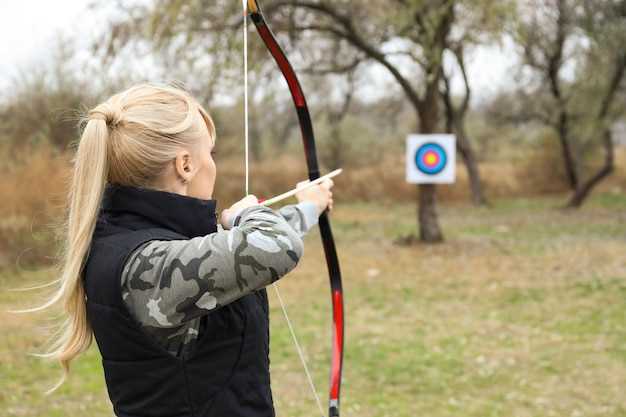
Target archery is a sport that combines precision, skill, and strategic thinking. At the heart of this competition lies the scoring system, which plays a crucial role in determining the outcome of tournaments. Familiarity with how scores are calculated is essential for both competitors and spectators alike, as it enhances the overall understanding and appreciation of the discipline.
The target consists of a series of concentric rings, each assigned a specific point value. The innermost ring, known as the bullseye, offers the highest score, while the outer rings decrease in value the farther they are from the center. Understanding this scoring method is fundamental for archers as they strategize their shots to maximize their scores.
In addition to grasping the scoring system, it is imperative to be aware of the rules governing the game. These regulations dictate the number of arrows shot, the distance from the target, and how ties are resolved. By following these guidelines, archers can ensure fair play and maintain the integrity of the tournament.
How to Interpret the Scoring Rings on an Archery Target

In target archery, understanding the scoring rings on an archery target is crucial for both competitors and spectators, especially during tournaments. The target is typically divided into several concentric rings, each assigned a specific point value.
The innermost ring, often referred to as the bullseye, holds the highest score, usually 10 points. As archers shoot, hitting this area maximizes their scoring potential, which is essential in a competitive setting. Points decrease as the arrows land in the outer rings, with values typically assigned as follows: 9 for the second ring, 8 for the third, and so on down to 1 point for the outermost ring.
It’s important to note that the scoring system can vary based on the specific rules of the tournament. Some competitions may employ a system where arrow placement within the rings affects scoring–touching the line between two rings can lead to additional considerations for judges and scoring officials.
One common method of interpreting scores is to observe where the arrow strikes the target in relation to the defined rings. A clean hit in the bullseye not only boosts the score significantly but may also impact psychological factors in tournament play, both for the shooter and their opponents.
Ultimately, mastering how to read these scoring rings optimally positions archers for success in competitive scenarios. A clear understanding of scoring dynamics is essential for any serious practitioner in the sport of archery.
Key Tournament Rules Affecting Scoring in Archery Competitions

In archery competitions, understanding the rules that govern scoring is essential for both participants and spectators. One of the most critical aspects of archery tournaments is the scoring system, which directly influences the outcome of the event.
Most tournaments follow standardized scoring methods, often based on the distance of the targets and the type of arrows used. Typically, the scoring zones on a target are divided into several concentric circles, with each area awarded different points. The inner circles score the highest, while the outer rings yield fewer points.
Another important rule involves the arrow placement. An arrow is considered to be within a scoring zone if any part of it breaks the line of that specific zone. This can create disputes, so many competitions will utilize tools or technology to measure scoring accurately.
Additionally, each tournament may have specific regulations regarding the number of arrows shot per round and the time allowed for shooting. For instance, in a typical tournament format, archers might be required to shoot a predetermined number of arrows within a defined time frame, and failing to adhere to these limits may penalize the score.
Moreover, archers are often required to comply with equipment regulations, including the type of bow and arrows. Non-compliance with equipment standards can result in disqualification or adjusted scoring based on penalties.
Finally, understanding the rules concerning tie-breaking procedures is crucial. In case of a score tie, tournaments often employ specific methods to determine the winner, such as a shoot-off or counting the number of Xs (the inner-most scoring area) to decide the victor.
Overall, familiarity with these key tournament rules can greatly enhance an archer’s performance and ensure a fair competitive environment.
Strategies for Maximizing Your Score in Target Archery
In target archery, understanding the scoring mechanism and the layout of the target rings is crucial for achieving a high score. The target is typically divided into ten concentric rings, with the innermost ring being the highest scoring area. Here are some strategies to help you maximize your score.
Practice Consistency: Consistency is key in archery. Establish a routine before each shot, which includes your stance, aim, and release technique. Practicing regularly will help you develop muscle memory, enabling you to hit the same scoring rings repeatedly.
Focus on Aiming: Proper alignment and aim are essential. Utilize the sights on your bow effectively to target the center of the bullseye. Spend time understanding how to adjust for environmental factors like wind, which can influence the arrow’s flight path and ultimately your scoring.
Understand the Rules: Familiarize yourself with the rules governing scoring in your specific archery discipline. Knowledge of penalties for missed shots or incorrect scoring can help you maintain focus and avoid unnecessary mistakes during competitions.
Control Your Emotions: High-pressure situations can lead to anxiety and reduced performance. Employ relaxation techniques such as deep breathing or visualization to control stress. A calm mind leads to better focus on hitting the high-scoring rings.
Analyze Your Performance: After practice sessions or competitions, take the time to analyze your shots. Identify patterns in your scoring that might indicate areas for improvement. Use tools like logbooks or apps to track your progress and adjust your training accordingly.
Use Quality Equipment: Ensure that your bow and arrows are properly matched to your skill level and body type. Low-quality equipment can hinder your performance and prevent you from reaching the scoring potential offered by better gear. Regular maintenance of your equipment is also vital to ensure optimal function.
By implementing these strategies, archers can enhance their performance and increase their likelihood of scoring within the highest rings. Ultimately, a combination of practice, knowledge, and mental focus will lead to improved scores in target archery.



